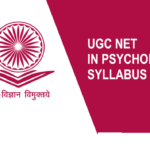Research, a cornerstone of knowledge creation and advancement, serves as the guiding force behind discoveries, innovations, and a deeper understanding of the world. In this comprehensive blog, we embark on a journey to explore the meaning, purpose, and various dimensions of research. From formulating research problems to defining variables and operationalizing concepts, we will delve into the intricacies of hypothesis development and the critical aspect of sampling in the research process.
Research: A Quest for Knowledge
Defining Research:
At its core, research is a systematic inquiry conducted to discover, interpret, and revise facts, theories, applications, and more. It is the structured and methodical investigation aimed at expanding our understanding of various phenomena.
Purpose of Research:
The overarching purpose of research is to contribute to the body of knowledge, address gaps in existing literature, and offer practical solutions to real-world problems. Research serves as a means to explore the unknown, test hypotheses, and ultimately enhance our comprehension of the world.
Dimensions of Research
1. Research Problems
Identification and Formulation:
Research often begins with the identification and formulation of a research problem. This is a specific, clear, and concise statement that articulates the issue the researcher aims to address. A well-defined research problem sets the stage for the entire research process.
Importance of Research Problems:
Clear identification of a research problem guides the researcher in selecting appropriate methods, gathering relevant data, and interpreting findings. It is the foundation upon which the entire research endeavour is built.
2. Variables and Operational Definitions
Understanding Variables:
Variables are key elements in research that can be measured or manipulated. They can be independent variables that cause an effect or dependent variables that are influenced by changes in the independent variable.
Operational Definitions:
Operational definitions provide clarity on how a variable will be measured or manipulated in a study. They translate abstract concepts into specific, measurable terms, ensuring consistency and precision in research.
Example:
If the research problem involves studying the impact of a new teaching method on student performance, the independent variable would be the teaching method, and the dependent variable would be student performance. The operational definition would specify how “student performance” is measured, such as through test scores or grades.
3. Hypothesis
Role of Hypothesis:
A hypothesis is a testable statement predicting the relationship between variables. It serves as a guiding framework for the research study, providing direction and focus. Hypotheses are formulated based on existing theories, observations, or a logical rationale.
Types of Hypotheses:
- Null Hypothesis (H0): States that there is no significant difference or relationship.
- Alternative Hypothesis (H1 or Ha): Suggests a significant difference or relationship.
Example:
In the teaching method example, a hypothesis might be: “Students exposed to the new teaching method will show a significant improvement in performance compared to those taught using traditional methods.”
4. Sampling
Significance of Sampling:
Sampling involves selecting a subset of individuals or elements from a larger population for study. It is impractical and often impossible to study an entire population, so researchers use samples to make inferences about the larger group.
Sampling Methods:
- Random Sampling: Every member of the population has an equal chance of being selected.
- Stratified Sampling: Dividing the population into subgroups and then randomly selecting samples from each subgroup.
- Convenience Sampling: Choosing participants based on their availability and accessibility.
- Snowball Sampling: Participants refer other potential participants.
Example:
If the research aims to study the effectiveness of the new teaching method in a city’s schools, random sampling might involve selecting schools randomly from the entire list of schools in that city.
The Research Process: A Synthesis of Dimensions
1. Formulating Research Problems
Research Problem Example:
Consider a scenario where an educational researcher observes a decline in reading proficiency among elementary school students. The research problem could be: “What factors contribute to the decline in reading proficiency among elementary school students?”
2. Identifying Variables and Operational Definitions
Variables and Operational Definitions:
- Independent Variable (IV): Socio-economic status of students
- Dependent Variable (DV): Reading proficiency
- Operational Definitions: Socio-economic status can be measured using parental income, education level, and occupation. Reading proficiency can be operationalized through standardized reading tests.
3. Formulating Hypotheses
Hypotheses:
- Null Hypothesis (H0): There is no significant relationship between socio-economic status and reading proficiency.
- Alternative Hypothesis (Ha): There is a significant relationship between socio-economic status and reading proficiency.
4. Sampling
Sampling Strategy:
Random sampling could involve selecting schools randomly from a list of all elementary schools in a particular district. Students within those schools would then be chosen randomly for the study.
Conclusion: The Research Tapestry
In conclusion, research is a multifaceted process encompassing the identification of research problems, the definition of variables and operational terms, hypothesis formulation, and the crucial aspect of sampling. Each dimension contributes to the intricacies of the research tapestry, guiding researchers in their quest for knowledge and understanding. As we navigate the ever-expanding landscape of research, it is essential to appreciate the interconnectedness of these dimensions and the collective impact they have on the advancement of human knowledge. Research is not merely a series of steps; it is a dynamic and evolving journey that continually reshapes our understanding of the world.






